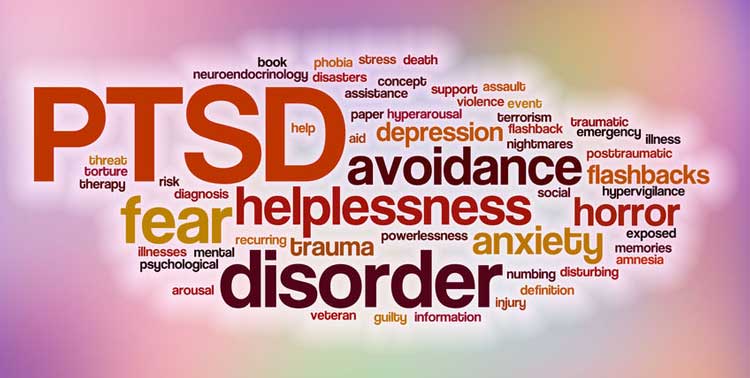TRIGGER WARNING: This week’s article contains information related to sexual violence and may be emotionally triggering for some readers.
When Shirley thinks back on her life, she tends to view it in two parts: before the “bad thing” happened and after the “bad thing” happened.
“I just wish I could move on,” Shirley confides in you, her closest friend. “This happens to so many women, and they keep living normal lives. Sometimes I think it was my fault. That I should have known better than to accept a ride from him. But then again, I was only eighteen. Barely an adult. I actually thought people had good intentions back then. Now I know better.”
The “bad thing” that Shirley doesn’t like to talk about happened a year ago, when she accepted a ride home from an acquaintance after a party. She remembers some of the events in vivid detail, like what she was wearing, what was on his car radio, how his mouth tasted like strawberry candy, the scent of his cologne, how badly her feet hurt when she ran away from him in heels. But there are spaces of time that seem “foggy” to her, like how long she was in the car, what time the “bad thing” happened, and how she managed to get away from him. She rarely talks about it, and even when she touches the surface of the event, she becomes emotional and anxious to move on, visibly shaking and sweating.
You, her best friend, are the only other person who knows what happened. The man who offered to drive her home took her to an abandoned parking garage and sexually assaulted her. When she tried to resist, he locked the doors and pulled a knife from his pocket. She had no means of escape. She remembers staring at a dumpster near the car, wondering if that was where he would put her body when he was finished, if he decided to kill her. Fortunately, when the assault was over and he was distracted, Shirley managed to get out of the car and to run to a stairwell. She ran up three flights and hid behind a parked car in total darkness for two hours, too scared to move, waiting for him to find her, praying that he wouldn’t. Eventually, she found the courage to call you to come pick her up.
Shirley never talked to anyone besides you about this assault, too afraid of what might happen if word got out. Still, the effects of it eat at her. When she goes about her day, little things will trigger flashbacks of the event— the sight of a dumpster, the smell of certain colognes, the taste of strawberry candy, blisters on her feet from uncomfortable shoes, or the song that played on her attacker’s radio. She threw away the dress, shoes, and underwear she had worn, but when she sees similar clothing, especially short red dresses and strappy heels, she starts to tremble. The more she avoids these triggers, the worse she feels.
Sometimes Shirley becomes extremely irritated for no apparent reason. She just “can’t cope with life,” she tells you. Her entire world view has become negative and paranoid. She drinks more than ever and rarely sleeps well. In recent months, she has become jumpy, especially when she’s around men. Her work quality has suffered greatly, resulting in a recent demotion. She cries daily, self-isolating from all of her old friends, sometimes even from you. You just don’t know what you can do to help Shirley, especially if she’s too afraid to tell anyone about it. You have suggested she talk to a therapist, who would be bound by rules of confidentiality, but she is reluctant. The longer she resists, the more hopeless her situation becomes.
What Is PTSD – Posttraumatic Stress Disorder?
Anyone familiar with trauma diagnoses would recognize that Shirley is suffering from Posttraumatic Stress Disorder, more commonly known as PTSD. PTSD is a DSM diagnosis listed under the broader category of Trauma- and Stressor Related Disorders. Just as not every person who lives through a distressing event will experience trauma, not everyone who experiences trauma has PTSD. In order to receive a diagnosis, specific criteria must be met.
For adults, the first criteria involves exposure to actual or threatened death, serious injury, or sexual violence in one or more of the following ways:
- Directly experiencing the traumatic event;
- Witnessing, in person, the event as it occurred to others;
- Learning that a violent or accidental traumatic event occurred to a close family member or friend; or
- Experiencing repeated or extreme exposure to aversive details of traumatic events, such as first responders or police officers (American Psychiatric Association, 2013).
The second criteria has to do with at least one form of “intrusive symptoms” surrounding memories of the event. These symptoms might include:
- Continual, involuntary, intrusive distressing memories of the event;
- Repeated distressing dreams surrounding the traumatic event;
- Dissociative reactions, such as flashbacks, in which the person feels or acts as though she is re-experiencing the trauma; or
- Noticeable physical reactions to internal or external “cues” (reminders) symbolizing or resembling aspects of the event (American Psychiatric Association, 2013).
Thirdly, PTSD sufferers avoid reminders of the event (American Psychiatric Association, 2013). These reminders might be internal or external. For some, they avoid distressing memories, thoughts, or feelings surrounding the event. Others avoid external reminders (i.e., people, places, or objects) that remind them of the event.
Fourthly, PTSD suffers experience changes in how they experience the world (American Psychiatric Association, 2013). These changes begin or worsen after the traumatic event takes place. Sufferers experience two or more of the following symptoms:
- Difficulty remembering important aspects of the event, due to amnesia;
- Repeated and exaggerated negative beliefs or expectations about themselves, others, or the world at large;
- Repeated distorted thoughts, leading to the person irrationally blaming herself or others for the event;
- Constant negative emotions;
- A lessened interest or participation in activities that previously brought pleasure;
- Feelings of detachment from others; or
- The inability to experience positive emotions (American Psychiatric Association, 2013).
Fifthly, PTSD sufferers experience changes in their arousal and reactivity related to the traumatic event, as shown by at least two of the following symptoms:
- Irritability or anger outbursts;
- Reckless or self-destructive behavior;
- Extreme alertness;
- Exaggerated startle response;
- Concentration problems; or
- Sleep problems (American Psychiatric Association, 2013).
All of these symptoms must last more than one month, causing clinically significant distress and problems in multiple areas of the person’s life, such as work, school, and family (American Psychiatric Association, 2013). The symptoms are not the result of a different psychological or medical condition, nor are they the result of substance use (American Psychiatric Association, 2013).
Some with PTSD also suffer from dissociative symptoms, such as:
Depersonalization: Feeling detached from oneself, as if one were an outsider looking in; or
Derealization: Feeling as though nothing is real, that the world at large is dreamlike, distant, or distorted (American Psychiatric Association, 2013).
In some cases, sufferers do not experience the full criteria for PTSD diagnosis until six months after the event takes place, in which case the clinician would diagnose the person with PTSD “with delayed expression” (American Psychiatric Association, 2013).
(It should be noted that the criteria listed above is for adults and adolescents experiencing PTSD. For a more detailed look at what PTSD is like for children six years old or younger, please see this article from the Anxiety & Depression Association of America.)
PTSD vs. Complex Trauma
Sometimes mental health professionals conceptualize PTSD and complex trauma as “big-T Trauma” and “little-t trauma”. This is not to suggest that complex trauma is less difficult to cope with, for those who have it. While it isn’t an official diagnosis in the DSM, complex trauma is the term for how mental health professionals conceptualize long-term, repeated traumatic events that take place in a person’s life, affecting their ability to cope and function as mentally healthy individuals. In many cases, the events surrounding complex trauma take place early in life at the hands of a caregiver, affecting the child’s ability to form secure attachments and to develop an identity (“Complex Trauma,” n.d.). Examples include victims of childhood emotional abuse or children/spouses of addicts.
While the symptoms of complex trauma may not meet the qualifications for a PTSD diagnosis, the difficulties these sufferers experience are often pervasive, limiting their ability to function. For children suffering from complex trauma, the trauma affects their abilities to cope with stress, to develop meaningful relationships as they grow, and to mentally and emotionally develop in a healthy way.
PTSD Therapy and Trauma Therapy
There are many ways of treating PTSD that enable the sufferer to process what happened and to move forward. One highly effective means of treating trauma is Eye Movement Desensitization and Reprocessing (more commonly referred to as EMDR), which involves re-exposing clients to the memory of the traumatic event while lessening the emotional impact of its significance. (For a deeper look at what this treatment involves, see this article from the APA.)
Some PTSD therapists use Cognitive Behavioral Therapy (CBT) techniques to address distorted thoughts and irrational beliefs surrounding the event, especially the guilt that many PTSD sufferers feel, as though they are responsible for what happened to them or that they could have done something differently to prevent the bad event from taking place. Some clients opt for medication to lessen the intensity of their symptoms, such as SSRIs or benzodiazepines.
Whatever PTSD therapy treatment the client and therapist choose to explore, it is important to keep in mind that in seeking help, the PTSD sufferer is taking the first step towards taking back control, empowering herself in a way that will enable growth and future happiness, despite the pain of the past.
In Conclusion…
Whether someone struggles with PTSD or complex trauma, the impact of the distressing memories surrounding the traumatic event(s) has the ability to totally derail one’s life, especially if the trauma goes untreated.
If a person gets into a car crash and smashes his head against the steering wheel, he would certainly be checked for a concussion, due to blunt force trauma. This type of “traumatic” injury would never be dismissed as imaginary, unimportant, or something he could “get over” if he just forgot about it. Psychological trauma is just as important as physical trauma. If we, as a society, change how we perceive mental health, treating psychological trauma as an “emotional concussion” rather than dismissing it as something that “just needs forgetting,” more and more people like Shirley would feel comfortable seeking treatment, thus empowering themselves and all others who have dealt with similar trials.
Courtesy: Gwendolyn Brown, M.S..
Resources:
- American Psychiatric Association. (2013). Diagnostic and statistical manual of mental disorders (5th ed.)
- Complex Trauma (n.d.). The National Child Traumatic Stress Network
- Eye Movement Desensitization and Reprocessing (EMDR) Therapy (2017).
- PTSD Symptoms in Children Age Six and Younger (2015). Anxiety & Depression Association of America.
Ready to find your PTSD counselor? Search the Jax Therapy Network and find counseling for PTSD near you.






